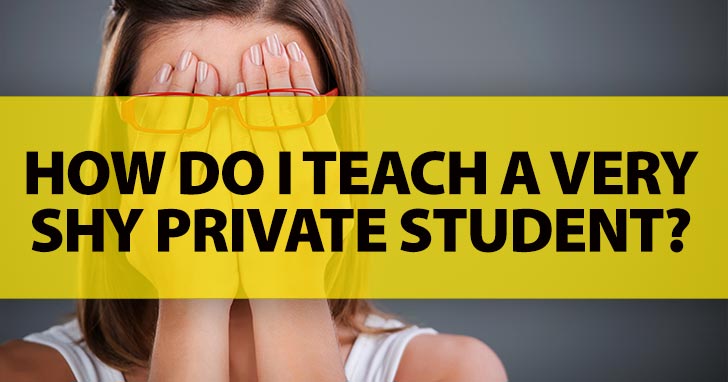Just Say No to Yes and No: the Why's and How's of Avoiding Closed Questions


“I have an extremely shy 15-year-old private ESL student. I’ve been her teacher for about two years, and she’s still reluctant to speak and participate. She speaks very softly and often whispers. I’ve tried many different things, and although she’s naturally shy, I get the feeling I’m doing something wrong. Her parents want her to do well in her school tests, so they tell me to focus on writing, and while it’s easier for my student, it simply does not help her shyness. She’s developing a big gap between what she can communicate in writing and in speaking. How can I bridge this gap and get her to speak more?” *
There are rowdy, undisciplined students, and there are brilliant, well-behaved dreams come true. But it’s the quiet, shy ESL student that often has ESL teachers scratching their heads and stumped about what to do. And why’s that? Shy students are often very smart and have tremendous potential. They often do well in the written tests so we know they “get it”. It’s simply quite frustrating to see all of that potential go to waste. Here are some ways in which you can draw out a shy private student and get him/her to speak more.

A shy student may be self-conscious about the sound of his/her voice or pronunciation. A good step towards building confidence is getting the shy student used to hearing the sound of his/her voice in English. So do plenty of reading out loud on a daily basis. Every now and then encourage the student to read a little louder. But don’t put too much pressure on them at the start! It’ll be counterproductive and make them clam up all over again. Start nice and easy, and then build towards longer readings and a louder voice.
Asking a shy student questions like, “Why are you so shy?” or “Are you usually this quiet?” will only make the situation worse. Treat the shy student as you would treat any other student. Don’t tiptoe around them or treat them like they’re different. Use the same tone of voice you would normally use in any other class. Be friendly and supportive, but most importantly, help your shy students see that they are not “handicapped” in any way.
Does your shy student read any books? Watch sci-fi movies or series? Play a musical instrument or have any kind of hobby? You’ll have a better chance of getting a response from him/her if you ask them about things they are familiar with, rather than about a hypothetical situation or fictional character.
Ask a shy student a very open-ended question, and you’ll get no response. They are probably overwhelmed and don’t even know where to start. So first start with yes/no questions and based on their answers ask why, when, where, how type of questions.
So the shy student answers your questions. The problem here is that you might still get one-word answers. You can try any number of strategies to encourage a shy student to at least say a complete sentence.
Say you’ve managed to get your shy student to provide solid complete answers to your questions…but they still can’t speak freely. Shy students don’t even know where to begin. Give them a three-step approach. Ask them a question. Tell them to:
For example, ask: What did you do last weekend?
Those three sentences will seem like a mouthful compared to their previous one-word answers! You can practice this three-step approach in writing until they feel confident enough to try it out loud.
Get a stopwatch. Ask your student a very open-ended question and start the stopwatch. Show your student how long he/she spoke for. Challenge them to speak for a bit longer: Can you speak for longer than 30 seconds next time? Let’s find out. If they manage to beat their record, they can get a reward like their choice of video for the next class, or you can add bonus points to their next test score.
Don’t put too much pressure on a shy student. Having to speak is pressure enough. Instead, give them tools and guide them step by step. They may not be the most talkative of the bunch, but as long as they constantly do more and achieve more, you’ll be guiding them in the right direction.